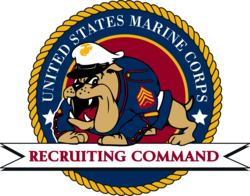
Military recruit training, commonly known as basic training or boot camp, refers to the initial instruction of new military personnel. It is a physically and psychologically intensive process, which resocializes its subjects for the unique demands of military employment.
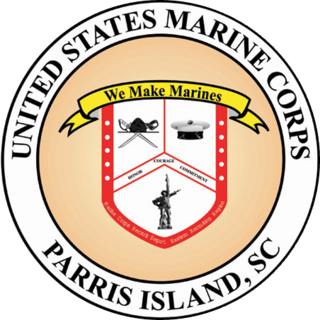
Marine Corps Recruit Depot Parris Island is an 8,095-acre (32.76 km2) military installation located within Port Royal, South Carolina, approximately 5 miles (8.0 km) south of Beaufort, the community that is typically associated with the installation. MCRD Parris Island is used for United States Marine Corps Recruit Training of enlisted United States Marines. Recruits living east of the Mississippi River report there to receive initial training. Recruits living west of the Mississippi River receive training at Marine Corps Recruit Depot San Diego, California, but may train at MCRD Parris Island by special request.

A drill instructor is a non-commissioned officer in the armed forces, fire department, or police forces with specific duties that vary by country. Foot drill, military step, and marching are typically taught by drill instructors.

Marine Corps Recruit DepotSan Diego is a United States Marine Corps military installation in San Diego, California. It lies between San Diego Bay and Interstate 5, adjacent to San Diego International Airport and the former Naval Training Center San Diego. MCRD San Diego's main mission is the initial training of enlisted male and female recruits living west of the Mississippi River. Over 21,000 recruits are trained each year. As of 2022, 1.5 million recruits have completed their boot camp training at the Depot. The Depot also is the home to the Marine Corps' Recruiter School and Drill Instructors School.

John Learie Estrada is the former United States Ambassador to Trinidad and Tobago and a former United States Marine who served as the 15th Sergeant Major of the Marine Corps from 2003 to 2007. Estrada stepped down from that post on April 25, 2007, turning over the billet to the next sergeant major, Carlton Kent. Estrada then retired from the military in June 2007, after over 33 years of service. He has also worked as a senior manager for Lockheed Martin Training Solutions from 2008 onward.

Wilbur Bestwick was a United States Marine who served as the first Sergeant Major of the Marine Corps from 1957 to 1959.

Mitchell Paige was an American-Serbian retired United States Marine Corps colonel who received the nation's highest military decoration for valor in combat, the Medal of Honor, during World War II.
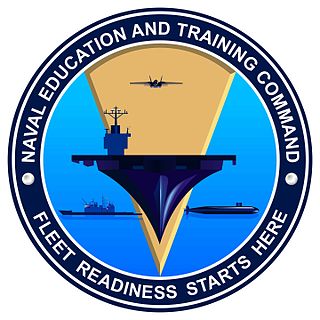
The Naval Education and Training Command (NETC) is an enterprise-level shore command of the United States Navy with more than 19,000 military and staff personnel at more than 1,640 subordinate activities, sites, districts, stations, and detachments throughout the world, and was established in 1971. NETC recruits, trains and delivers those who serve the nation, taking them from "street to fleet" by transforming civilians into highly skilled, operational, and combat ready warfighters.
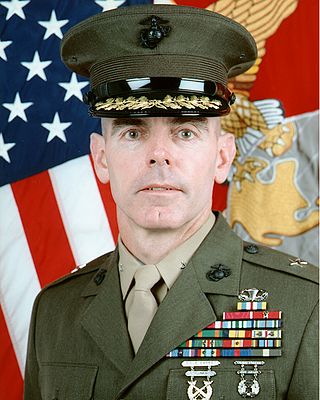
Brigadier General Joseph J. McMenamin was a general officer in the United States Marine Corps and was the Assistant Division Commander for the 2nd Marine Division.

Kenneth Dillon Bailey was a United States Marine Corps officer who posthumously received the Medal of Honor for heroic conduct during action during the Battle of Guadalcanal in the Solomon Islands. He also earned the Silver Star Medal during the initial landing on Tulagi in the Solomon Islands and the Purple Heart.

Lewis G. Lee is a retired United States Marine who served as the 13th Sergeant Major of the Marine Corps from 1995 to 1999. He retired from active duty in 1999 after over 31 years of service. He was the last Sergeant Major of the Marine Corps to serve in combat in the Vietnam War.

David W. Sommers is a retired United States Marine who served as the 11th Sergeant Major of the Marine Corps from 1987 to 1991.
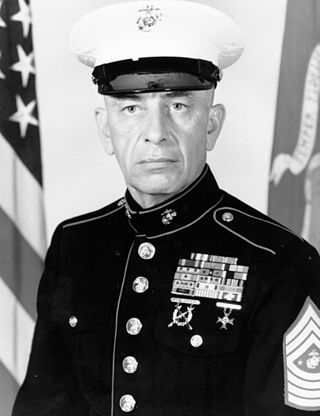
Henry H. Black was a United States Marine who served as the 7th Sergeant Major of the Marine Corps from 1975 to 1977.
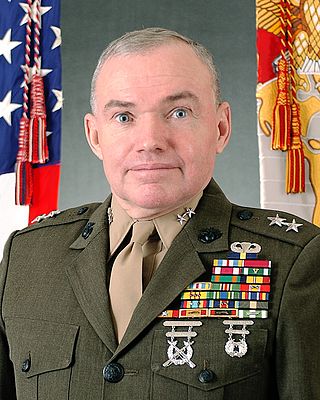
Major General David F. Bice is a retired Inspector General of the United States Marine Corps, formerly stationed in Washington, D.C. Bice retired from active duty in 2007 after over 36 years of service.

Angela Salinas is a retired major general in the United States Marine Corps. She was the first woman to command a Marine Corps Recruit Depot, and the first Hispanic woman to become a general in the Marines.
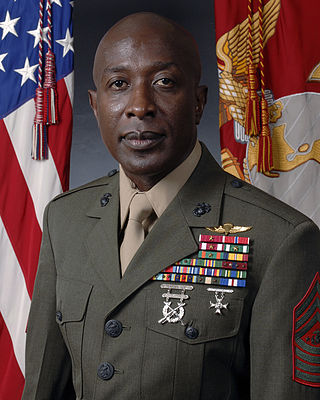
Carlton Wayne Kent is a retired United States Marine who served as the 16th Sergeant Major of the Marine Corps. He succeeded John L. Estrada on April 25, 2007, and was succeeded by Micheal Barrett on June 9, 2011.

United States Marine Corps Recruit Training is a 13-week program, including in & out-processing, of recruit training that each recruit must successfully complete in order to serve in the United States Marine Corps.
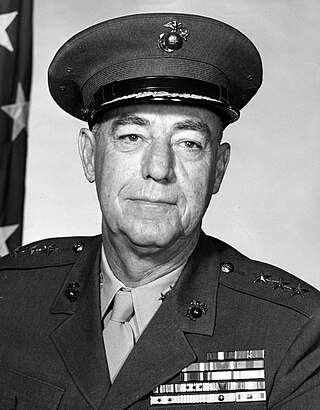
Joseph Charles Burger was a decorated United States Marine Corps officer and college athlete. He rose to the rank of lieutenant general and concluded his career as commanding general of the Fleet Marine Force, Atlantic. Burger was also commanding general of Marine Corps Recruit Depot, Parris Island during the Ribbon Creek incident in April 1956.

The Marine Recruit Training Regiment San Diego (MCRDSD), based at San Diego, California, is a training regiment of the United States Marine Corps. It is composed of three recruitment battalions and three recruit training battalions: 1st, 2nd, 3rd. Each battalion is responsible for ensuring that each company within it is following the procedures set forth by the Recruit Training Regiment. The West Coast depot is in charge the basic training of all male candidates who join the Marine Corps from the west of the Mississippi

Emile Phillips Moses was a distinguished officer in the United States Marine Corps with the rank of major general. A veteran of forty years of service and several expeditionary campaigns, Moses is most noted for his service as commanding general, Marine Corps Recruit Depot Parris Island during World War II and for his efforts in the developing of Marine Corps Amphibious Warfare doctrine, especially Landing Vehicle Tracked.
